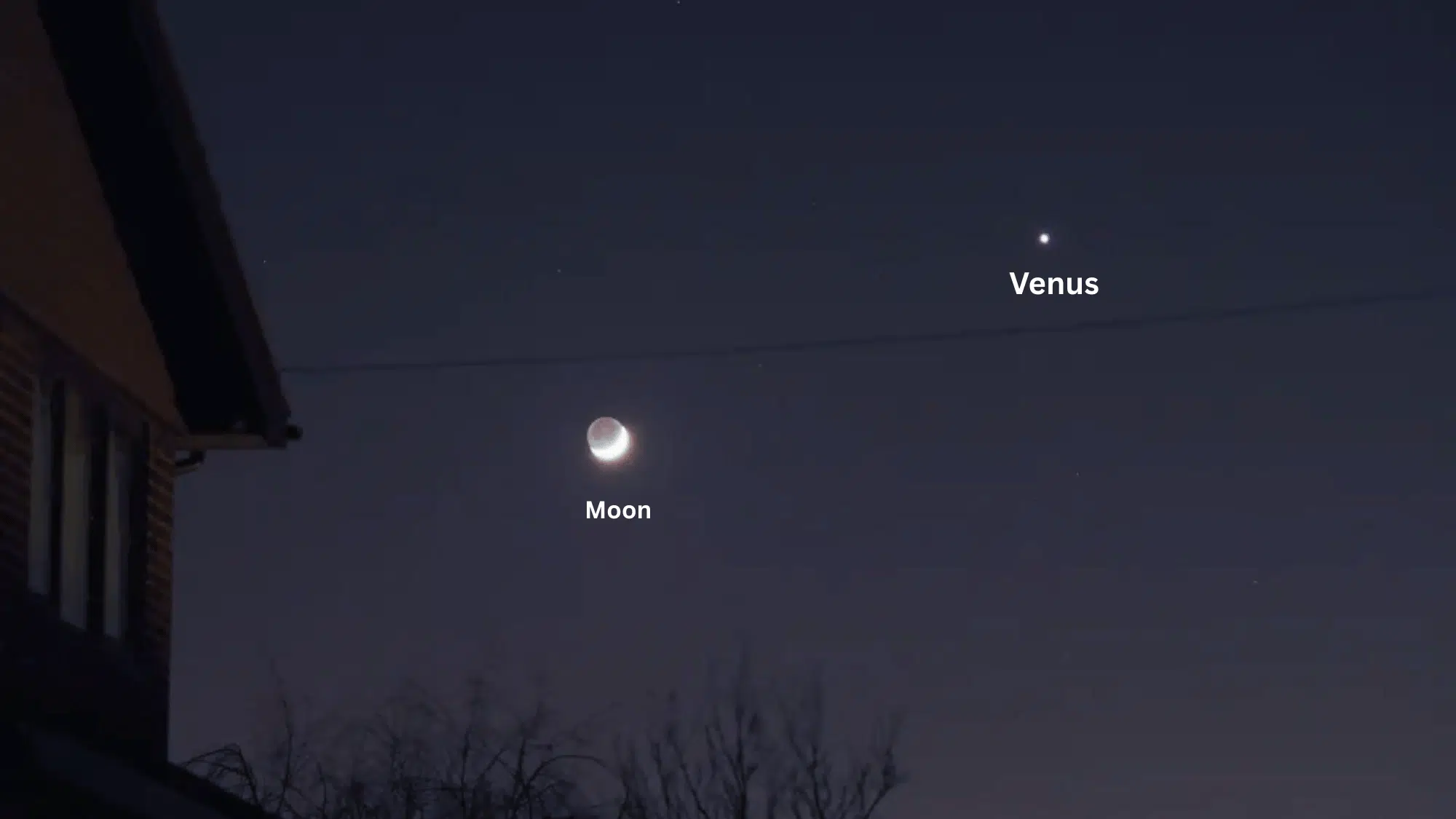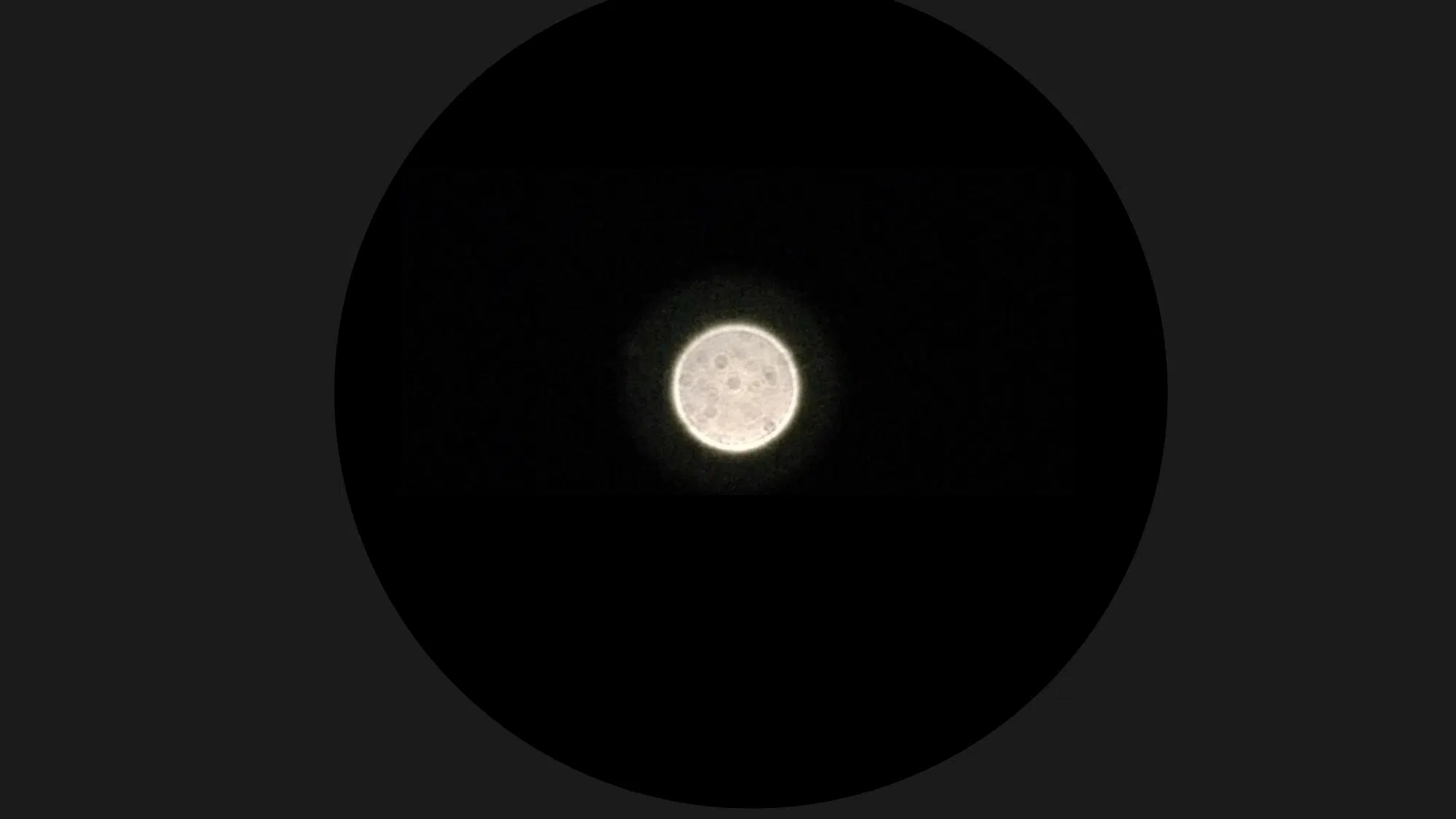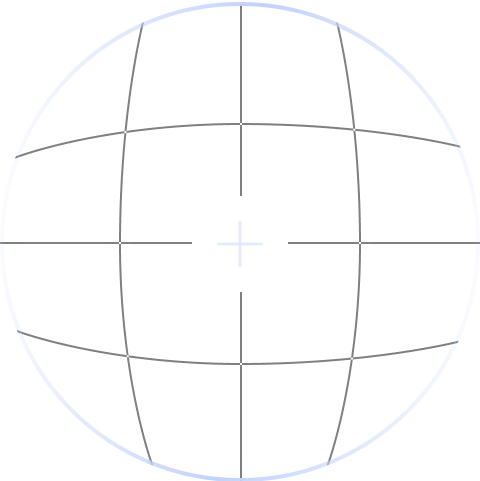Have you ever looked up at the night sky and noticed a brilliant “star” shining just after sunset or before dawn? Chances are, it was Venus, the brightest planet in our solar system, often known as the morning star or evening star.
With its shining glow and ever-changing phases, Venus never fails to catch the eye.
Viewing Venus through a telescope is both accessible and awe-inspiring, revealing its crescent shapes and soft, golden light.
This blog finds out what makes Venus such a remarkable object to observe, offering practical tips, real-life experiences from skywatchers, and beautiful images and videos captured through telescopes.
How Bright is Venus in the Night Sky?
Venus is often called the brightest planet visible from Earth, and for good reason. It outshines every other planet and even most stars, second only to the Moon in brilliance.
Its exceptional brightness comes from its thick, reflective cloud cover made mostly of sulfuric acid, which bounces sunlight back into space with remarkable efficiency.
Depending on its position relative to Earth and the Sun, Venus can reach a magnitude of about 4.7, making it easily visible even during twilight.
Many people mistake it for a distant aircraft or star because of its intense glow.
Whether seen as the morning star before sunrise or the evening star after sunset, Venus never fails to catch attention and spark curiosity among skywatchers.
Where and When You Can See Venus


Venus is one of the easiest planets to spot because of its intense brightness and predictable position in the sky. It’s visible shortly after sunset or just before sunrise, depending on its orbit.
When Venus appears in the western sky after sunset, it’s known as the Evening Star; when it shines in the eastern sky before dawn, it’s called the Morning Star.
A person can observe Venus from almost anywhere on Earth with a clear view of the horizon. Urban light pollution doesn’t affect it much since it’s so bright.
Look for it near the Sun’s path (the ecliptic), glowing low above the horizon. A telescope or even binoculars will reveal its crescent phases and brilliant white-yellow shine.
The Right Telescope for Venus
The right telescope for Venus depends on your experience. Binoculars reveal its crescent, beginner scopes show clear phases, and advanced telescopes with filters enhance sharpness while reducing glare.
| Equipment | What You’ll See | Pros | Cons |
|---|---|---|---|
| Binoculars | Bright crescent shape | Easy, portable | Very limited detail |
| Beginner Telescope (70–100mm) | Clear phases of Venus | Affordable, beginner-friendly | Limited fine detail |
| Advanced Telescope | Sharper, magnified phases | High magnification | No surface features (clouds) |
| Filters (UV/Polarizing) | Reduce glare, add contrast | Better viewing quality | Extra cost and setup |
How to Watch Venus Clearly in a Telescope
Viewing Venus through a telescope requires specific timing and techniques. These are the practical methods to observe this bright planet’s phases and features clearly through your telescope eyepiece.
- Observe during twilight hours: Venus appears best in the early morning before sunrise or evening after sunset when the sky isn’t completely dark, reducing its overwhelming brightness.
- Use a polarizing or neutral density filter: These filters cut down Venus’s intense glare, making surface details and phases much easier to see without eye strain or discomfort.
- Choose moderate magnification settings: Start with 50-100x magnification to see Venus’s crescent or gibbous phases clearly before attempting higher powers that may blur the image.
- Watch for atmospheric steadiness: Observe on nights with stable atmospheric conditions when stars twinkle minimally, ensuring sharper views of Venus’s disk and phase details.
- Track Venus over several weeks: Monitor how Venus’s phase changes from crescent to gibbous over time, creating a rewarding long-term observation project you’ll remember.
Venus Through a Telescope vs the Naked Eye


When viewed through a telescope, Venus reveals a whole new level of beauty and realism. Its crescent phases appear clearly, changing shape much like the Moon as it moves around the Sun.
The planet’s soft, golden glow and shimmering light make it feel almost alive, a nearby world rather than a distant speck.
Observing Venus this way creates a deeply personal and awe-inspiring experience, as though you’re witnessing its celestial dance firsthand.
In contrast, when seen with the naked eye, Venus appears as a bright, steady “star” in the twilight sky, radiant but lacking detail.
Although simple and mysterious, this view still holds charm, drawing the eye upward with its brilliance.
Together, both perspectives intimate through the telescope and enchanting to the eye, show why Venus continues to fascinate skywatchers everywhere.
Real Experiences of Seeing Venus Through a Telescope
The Cloudy Nights user, StolenPotato, said:
“I finally fixed it yesterday … I got a very nice view of the crescent … After switching to my 4 mm I was able to see the phase of it, but it still looks tiny.”
After adjustments, the crescent became visible, though still small and challenging to see.
The user of Stargazers Lounge tells:
“Hello … set it up last night … I took my telescope outside … After finding Venus … there was something like a large black circle in the centre of the bright … Before focussing, it appeared to be just v bright light.”
A stargazer saw intense brightness, then noticed a dark circle within the glow.
Another user of Stargazer’s lounge said:
“Venus’ brightness is always overwhelming, no matter what eyepieces you’re using. The resolving power of a telescope determines the amount of detail you can see.”
This captures a common frustration among observers and underscores how hardware limits and brightness affect the view.
A Reddit user tells:
“These filters are used when viewing bright objects like The Moon or Venus to reduce glare.”
Filters help cut Venus’s intense glare, improving clarity for telescope viewing.
A Quora user mentioned:
“Viewing Venus Through a Telescope … when Venus is in the sky, it is brighter than any star besides the Sun.”
Venus shines brighter than any star except the Sun when visible in the sky.
Tips to Make Your First Venus Viewing Easy


Image Source: NASA Science
Viewing Venus for the first time can be both exciting and challenging. These simple tips will help you enjoy clearer views and make your stargazing experience more rewarding.
- Start with simple binoculars or a small telescope to learn the basics of observing Venus.
- Observe during twilight to reduce glare and enjoy steadier, more comfortable views of the planet.
- Use a polarizing or UV filter to cut brightness and enhance Venus’s crescent phases more clearly.
- Keep a journal of observations, noting dates, times, and phases to track your progress.
- Join local astronomy clubs to learn from experienced stargazers and share your excitement about Venus.
- Explore online forums or groups where people post images, videos, and tips about observing Venus.
- Be patient with equipment adjustments; practice focusing to get the clearest, sharpest view possible.
Conclusion
Observing Venus through a telescope is more than a simple pastime; it’s a beautiful fusion of science, curiosity, and wonder.
From its shining brightness to its graceful crescent phases, Venus offers an experience that feels both accessible and deeply inspiring.
Whether seen through binoculars, a beginner telescope, or advanced equipment, each view provides a humbling connection to the vastness of space.
Readers are encouraged to observe Venus themselves, capture photos or short videos, and share their discoveries with others.


















